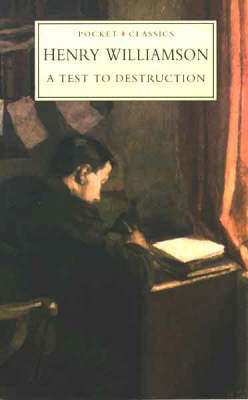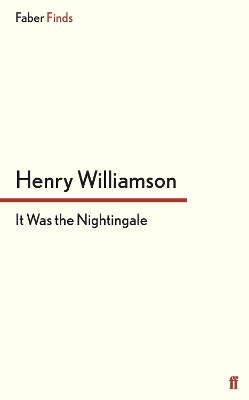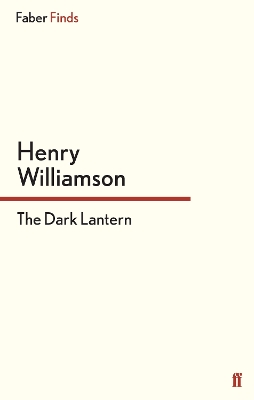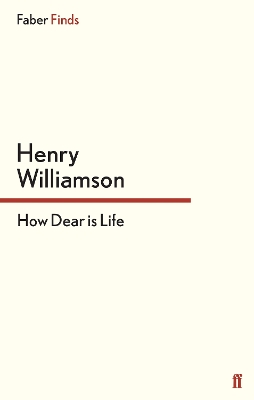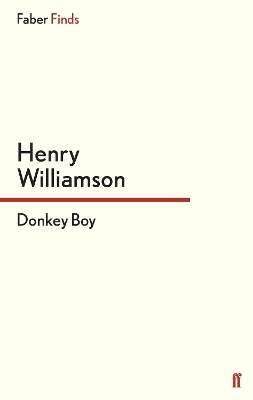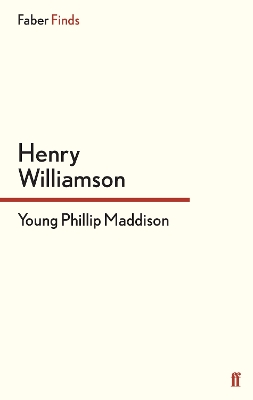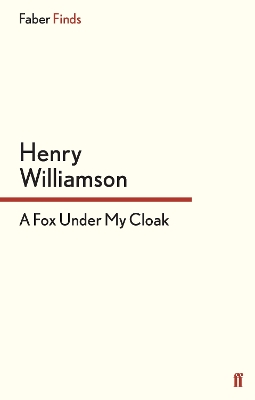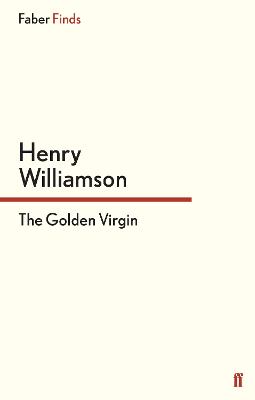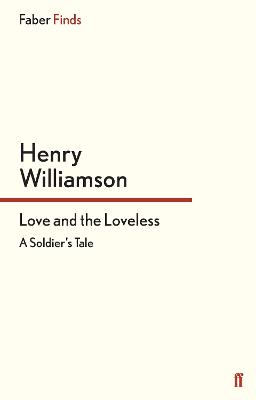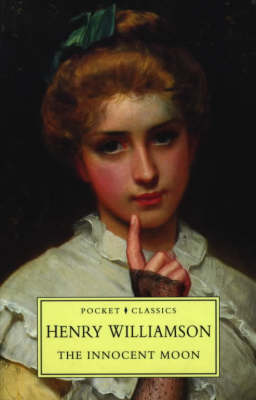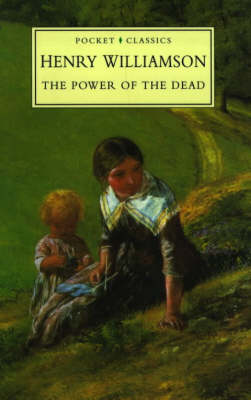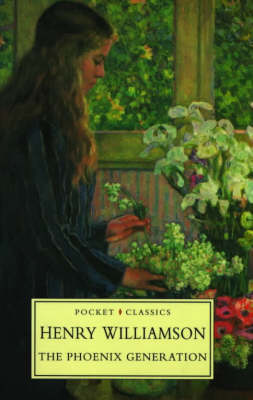Pocket Classics S.
12 total works
It Was the Nightingale (1962) was the tenth volume of Williamson's great roman-fleuve, A Chronicle of Ancient Sunlight. After only a year of married happiness, Phillip Maddison experiences tragedy when his young wife Barley dies in childbirth. Left with a baby son, a cat, a dog and an otter cub he and Barley rescued while on holiday in France, Phillip endures the deepest grief. When the otter goes missing Phillip dedicates his life to searching for her, in the hope that success might grant him a new start in life.
'At times almost unbearably poignant... In It Was the Nightingale Maddison enters a world with which Williamson, on the strength of the remarkable Tarka the Otter, will always be associated.' Anthony Burgess, Ninety-Nine Novels: The Best in English Since 1939
The Dark Lantern (1951) was the first of Henry Williamson's fifteen-volume A Chronicle of Ancient Sunlightspanning the years from the late Victorian period to the Second World War. In it we meet Richard Maddison, a countryman working in London as a City clerk, struggling to make do on a few shillings a week. He falls for Hetty Turner, youngest daughter of a prosperous merchant, but her father rates Richard an unsuitable suitor.
'There is magic in Henry Williamson's novel . . . which raises it right out of the family saga class. The magic is of the steam train age of South London which is so lovingly described.' John Betjeman, Daily Telegraph
'Williamson's style is romantic, though rarely sentimental, and his sensuous response to nature is fresh and surprising.' Anthony Burgess, Ninety-Nine Novels: The Best in English since 1939
How Dear is Life (1954) was the fourth entry in Henry Williamson's fifteen-volume A Chronicle of Ancient Sunlight spanning the years from the late Victorian period to the Second World War. It finds Phillip Maddison in the portentous months leading to the outbreak of war in 1914.Now a clerk in the Moon Fire Office, Phillip decides to join the territorials - attracted by the money, the camp near the sea, and the prospect of a new suit of clothes. As a glorious summer slips away war seems unreal; but the old world is in peril, and before long the British Expeditionary Force is setting sail for France.
'Williamson's style is romantic, though rarely sentimental, and his sensuous response to nature is fresh and surprising.' Anthony Burgess, Ninety-Nine Novels: The Best in English since 1939
Donkey Boy (1952) was the second entry in Henry Williamson's fifteen-volume A Chronicle of Ancient Sunlightspanning the years from the late Victorian period to the Second World War. It tells of Richard Maddison's first-born Phillip, nicknamed 'donkey boy' because his life was saved in infancy by being fed with ass's milk. The boy grows up in the Edwardian era, something of a misfit, at odds with his father.
'With extraordinary skill and precision [Williamson] rebuilds the scenery of the past... [he] seems to be engaged in a thriller whose instalments can be relied on to animate a whole section of social history.' Spectator
'Williamson's style is romantic, though rarely sentimental, and his sensuous response to nature is fresh and surprising.' Anthony Burgess, Ninety-Nine Novels: The Best in English since 1939
Young Phillip Maddison (1953) was the third entry in Henry Williamson's fifteen-volume A Chronicle of Ancient Sunlight spanning the years from the late Victorian period to the Second World War. It carries forward the story of Phillip as he grows towards manhood in the years immediately preceding the Great War. Unpredictable and wayward, Phillip nevertheless possesses a keen love of nature, which he indulges as best he can in the nearby countryside. But as his schooldays draw to a close he seems destined to follow his father by working in the Moon Fire Office, in the smoky heart of the greatest metropolis the world has ever seen.
'Williamson's style is romantic, though rarely sentimental, and his sensuous response to nature is fresh and surprising.' Anthony Burgess, Ninety-Nine Novels: The Best in English since 1939
A Fox under My Cloak (1954) was the fifth entry in Henry Williamson's fifteen-volume A Chronicle of Ancient Sunlight spanning the years from the late Victorian period to the Second World War. It follows Phillip Maddison into the Great War, surviving in the face of terror, from the famous Christmas Truce of 1914 to the gas attacks of the Battle of Loos the following year. While home in England on sick leave Phillip obtains his commission into a fashionable regiment in which his social inadequacies make him the butt of his fellow officers' scorn. Yet, alone among them, Phillip has tasted the bleak reality of life, and death, on the Western Front.
'Williamson's style is romantic, though rarely sentimental, and his sensuous response to nature is fresh and surprising.' Anthony Burgess, Ninety-Nine Novels: The Best in English since 1939
The Golden Virgin (1957) was the sixth entry in Henry Williamson's fifteen-volume A Chronicle of Ancient Sunlight spanning the years from the late Victorian period to the Second World War. Its action unfolds in 1916, the year of the Somme. As war destroys the countryside Phillip Maddison loves, turning it into an inferno of mud and terror, the damaged figure of the Mother of God with her Babe on a ruined church inspires the legend that war will end only when she, the Golden Virgin, topples into the ruins below. Invalided home once again Phillip re-crosses the narrow waters of the Channel to find life continuing as before, albeit with an ever-widening gulf between those at home and those who have 'returned.'
'Williamson's style is romantic, though rarely sentimental, and his sensuous response to nature is fresh and surprising.' Anthony Burgess, Ninety-Nine Novels: The Best in English since 1939
Love and the Loveless (1958) was the seventh entry in Henry Williamson's fifteen-volume A Chronicle of Ancient Sunlight spanning the years from the late Victorian period to the Second World War. The year covered by this novel, 1917, was perhaps the darkest of the Great War, with widespread mutinies in the French Army after the disastrous Nivelle offensive. Phillip Maddison is now a young transport officer, tending pack animals, surviving amid devastation and death. His courage, sustained by poetry, by comradeship, by the comfort of whisky and water, is perhaps unnatural; but amid the charnel house of battle he endures, in a way of life so alien to those at home that it might be the dark side of the moon.
'Williamson's style is romantic, though rarely sentimental, and his sensuous response to nature is fresh and surprising.' Anthony Burgess, Ninety-Nine Novels: The Best in English since 1939
